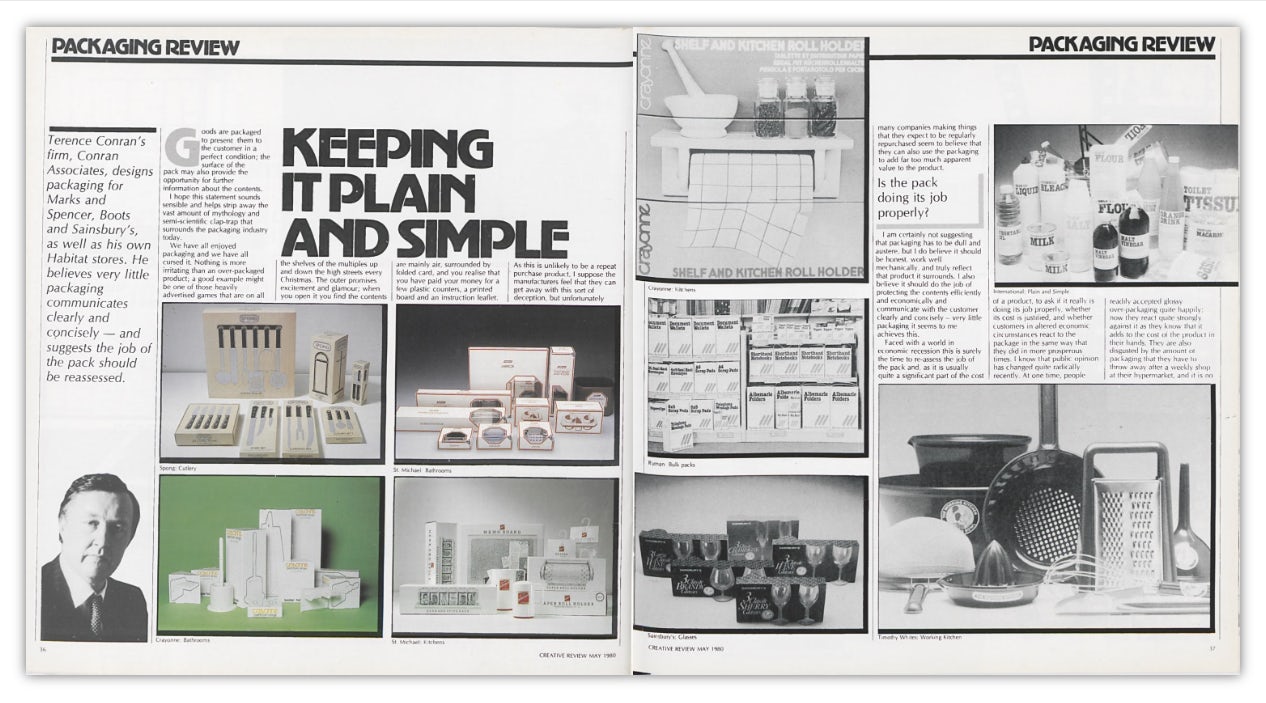Remembering Terence Conran
Tributes to the design legend Terence Conran, who died on September 12, have poured in this week from those he influenced and supported. Here, Clive Grinyer, head of design at the RCA, looks back at his impact on British design and culture

Growing up in a dowdy UK was not pleasant for anyone, especially any young designers who had discovered the Bauhaus and the egalitarian beauty of modernism. The echo of the Festival of Britain could be seen in my parent’s furniture but the world was brown and beige.
For the design revolution in the UK to be kickstarted by a retail store was not what we were expecting but the impact of Habitat on the King’s Road led to it being a mecca for design students looking for affordable colour and simplicity. Versions of Bauhaus furniture were in cool people’s flats and at Central we were still bending tubular steel frames in our designs – until Sottsass and Memphis woke us up. Conran’s role as a tastemaker cannot be underestimated but his design firm was tremendously influential too, producing a generation of talented designers.

The excitement of the opening of the Conran financed Boilerhouse in the V&A felt like design was finally being understood and celebrated in a country where the public and business had resolutely resisted contemporary design as a bit foreign, and exporting manufacturers sold at trade shows with the Union flag as their only weapon. As the Boilerhouse became the Design Museum, the public interest in design and the desire to study and enter the creative design industries blossomed and drove the UK’s design schools to new heights.
Conran was a famous person we all felt we knew but I finally met him through his work with Helen Hamlyn Design Centre. He was passionate about designing for all abilities and all ages and that we should teach the next generation of designers to design for everyone.
He sent me a note after hearing a speech I had given at the Helen Hamlyn Awards ceremony to share his hopes that the next generation of designers would embrace inclusivity. He would talk to doctors and surgeons about design and implore us to make more progress and ensure design was integrated into all aspects of healthcare.


My last memory of Terence was sitting next to him at a vast awards ceremony where he, of course, complained mightily about the food and told me his favourite restaurant was in Paris where they just threw the food on a large wooden table.
He was a mentor and friend to many designers and it has been a pleasure to hear the many comments from those he supported and encouraged. I will always thank him for his modernism, courage and ability to do what we thought was impossible, make the UK a powerhouse of design.
Clive Grinyer is head of service design at the Royal College of Art in London and a design consultant; clivegrinyer.com

















